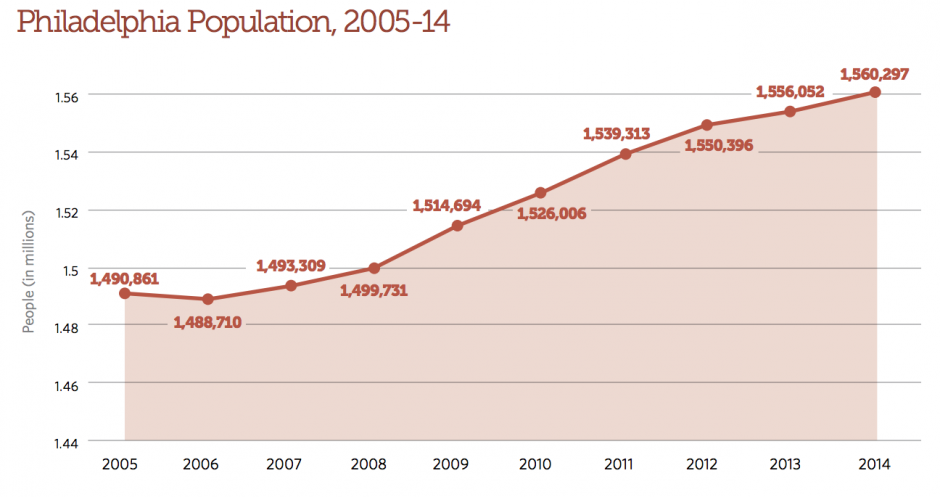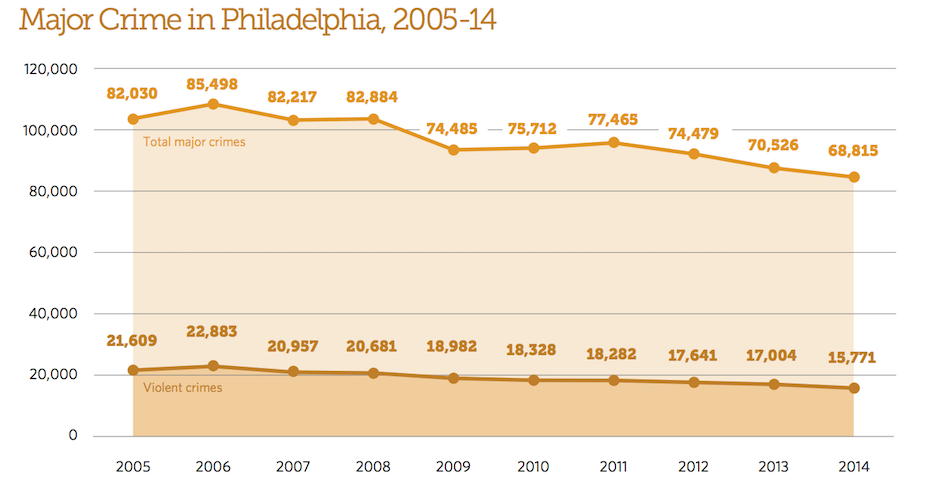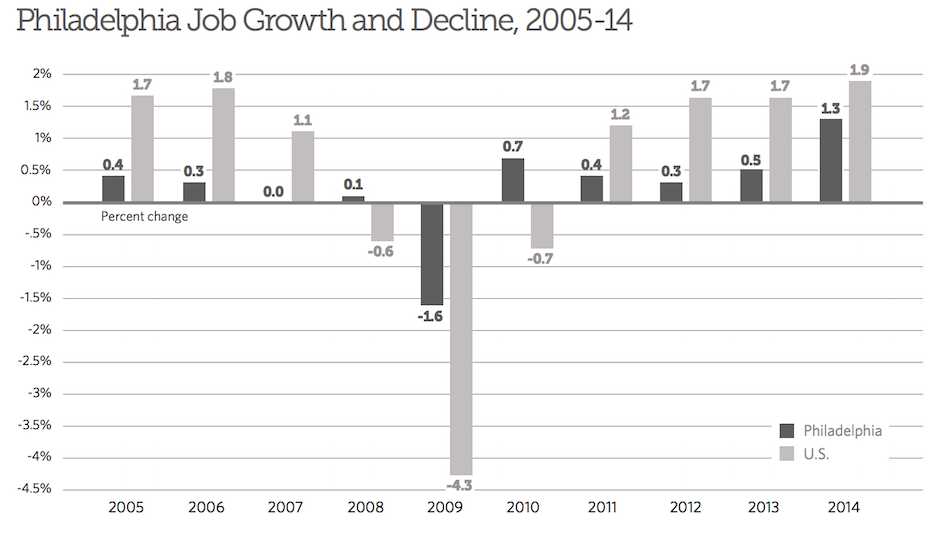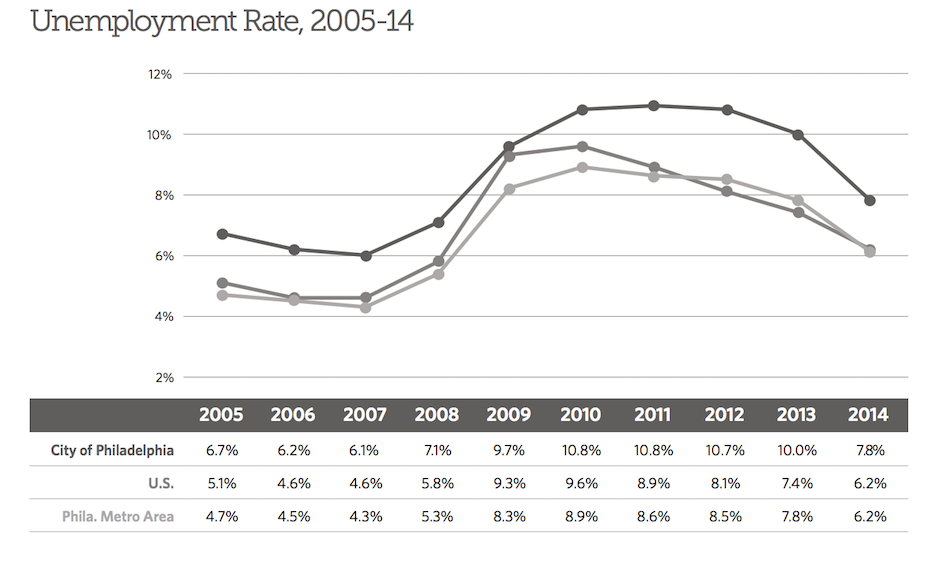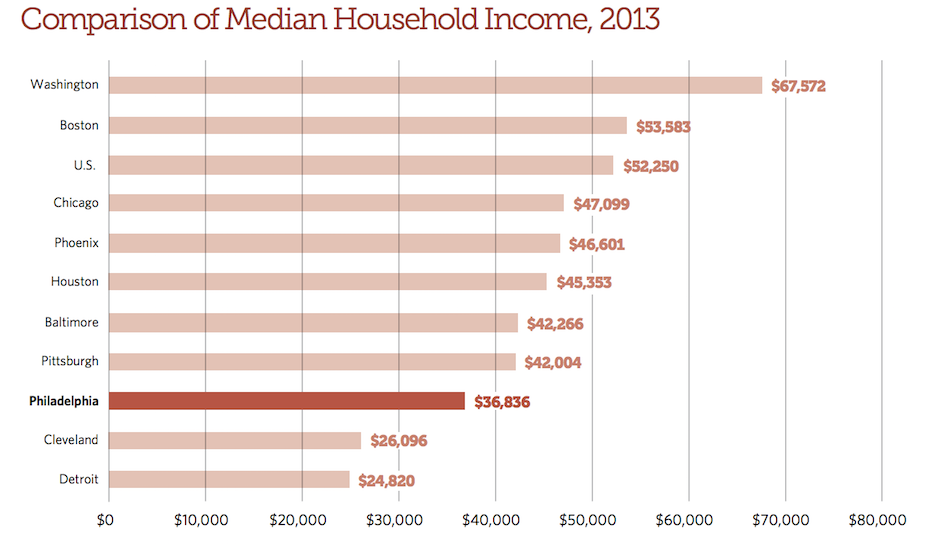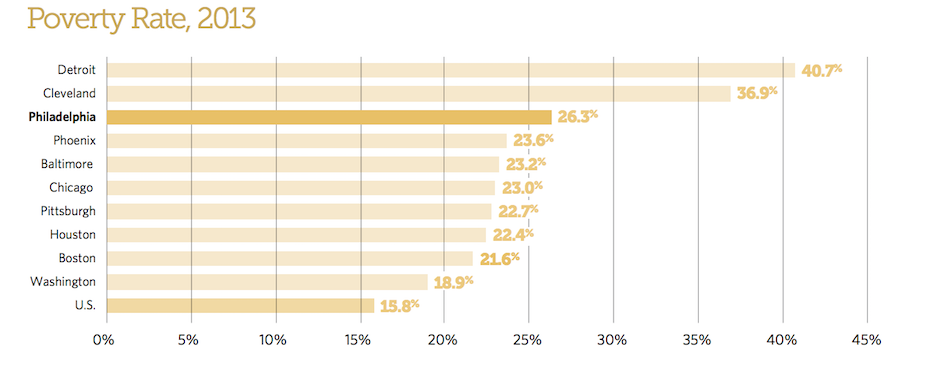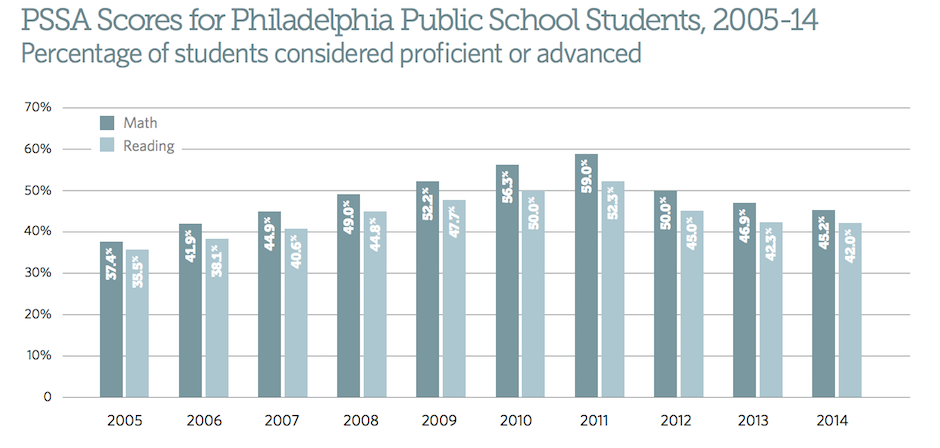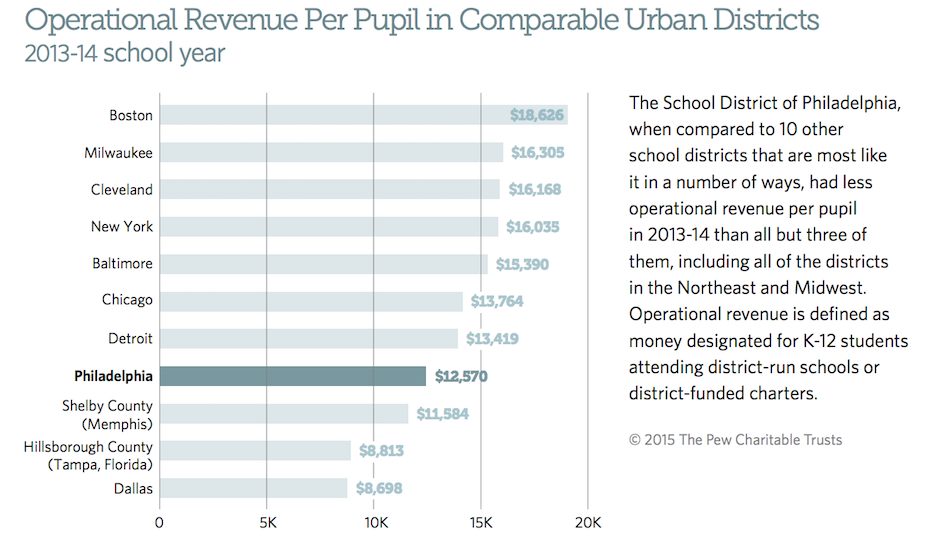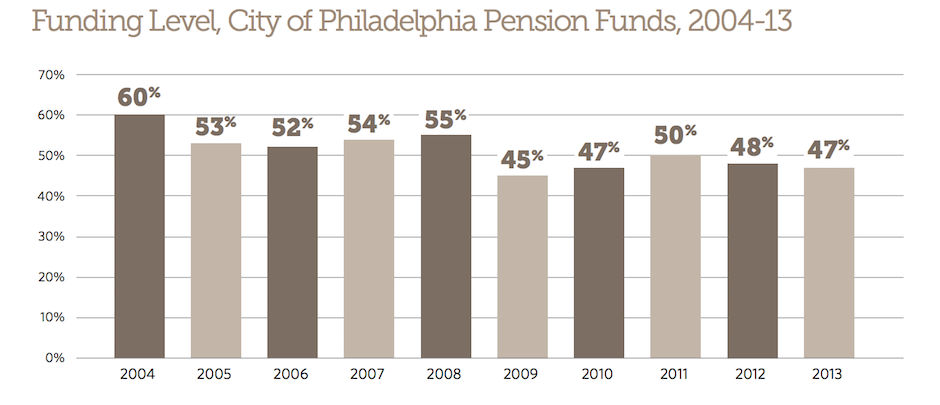10 Charts That Show Philly’s Outlook Is More Precarious Than Philadelphians Think
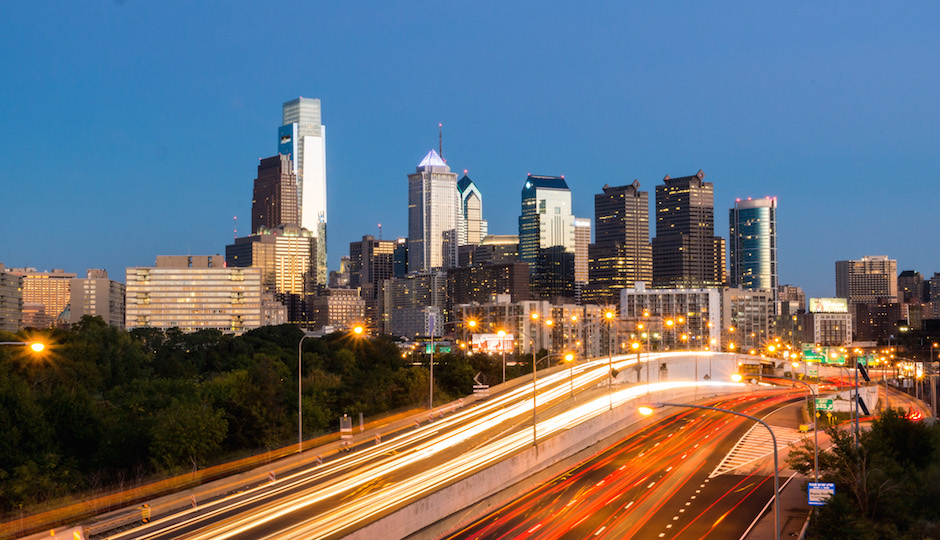
Photo by els1124 via Flickr
Philadelphians have a giant crush on Philly, according to poll results released last week by the Pew Charitable Trusts. Forty-eight percent of residents surveyed believe the city is moving in the right direction, the highest amount since Pew started asking the question six years ago.
But like any serious crush, Philadelphians’ view of the city is somewhat idealized.
Pew’s new “State of the City” report found Philly continues to face major, entrenched problems, ranging from a sky-high poverty rate to an underfunded government pension system. As the paper puts it, “The realities of the city—as embodied by the often unforgiving numbers—are complex and nuanced, with seemingly a negative for every positive and vice versa.”
Here are 10 graphs from the Pew report that show the city’s outlook is much more of a mixed bag than Philadelphians think:
First, the good news: Philadelphia’s population grew in 2014 for the eighth straight year, something that would have been hard to imagine just a decade ago. The city had previously lost residents for more than half a century. But even this good news has its flip side. That population gain is attributable to births, not new residents moving to Philly from the suburbs or other cities. Parents of school-age children were among the least optimistic groups of people surveyed by Pew, almost certainly because of the city’s school system. Can the city sustain birth-driven population gains without dramatic improvements at the district? It’s an open question.
In 2013, the number of homicides in Philadelphia fell to its lowest point in 45 years. In 2014, the relatively positive trend continued: The homicide rate remained at a modern low, with one more murder recorded than in the prior year. Plus, there were fewer major and violent crimes in Philadelphia last year than in the past three decades.
This is perhaps the most promising statistic from last year, according to Pew: The city approved 3,973 building permits for new residences, the highest number in at least 19 years. That planned construction is worth an estimated $879 million.
Here’s where things start to get really complicated. On one hand, Philadelphia added 8,800 jobs in 2014, the largest increase in 16 years. But the city’s rate of job growth — 1.3 percent — fell behind the country’s rate, which was 1.9 percent.
The city’s unemployment rate is the same story: It dropped from 10 percent in 2013 to 7.8 percent last year, which is good, but it still remains significantly higher than the country’s overall unemployment rate.
One inevitable outcome of Philadelphia’s high unemployment rate is a low income level among residents. Compared to nine other similar cities, Philadelphia’s median household income ranked eighth, with only Cleveland and Detroit faring worse.
As the Pew report notes, the city’s high poverty rate also contributes to its low income level. In 2013, Philadelphia’s poverty rate of 26.3 percent was the highest among the nation’s largest 10 cities. Compared to nine other cities, only Detroit and Cleveland had a larger percentage of poor residents than Philadelphia. The silver lining: Philly’s poverty rate dropped slightly in 2013 from 28.4 percent two years prior.
The school district’s test scores continued to drop in math and reading in 2014. Superintendent William Hite says “he was surprised that the most recent decline was not larger, citing the chaos and uncertainty surrounding the district,” the report reads.
Hite, of course, is referring to the financial chaos in Philadelphia’s schools. Here’s a handy statistic to share with your friends from the ‘burbs who can’t believe the city’s school system keeps asking for more money, even though it has a $3 billion budget. Compared to 10 other similar districts, Philadelphia ranked eighth in operational funding per pupil.
Last, but not least, Philadelphia’s most boring, big problem: its underfunded pension system. The city has less than half the money it needs to pay for retirement benefits it has promised workers.
All things considered, Philly is in a far more precarious situation than Philadelphians seem to believe. Will the city’s optimism enable it to address entrenched problems with a newfound energy? Or will the city’s sense of urgency be diminished by its rosy outlook?
